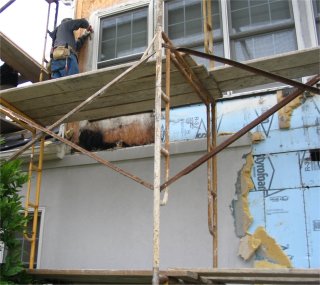
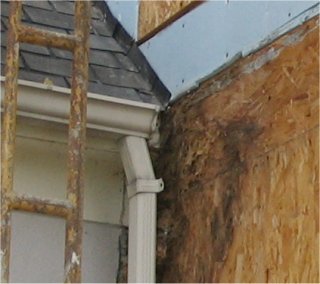 .
.Note the hairy black mold under the window.
a kick-out flashing, a simple piece of sheet metal diverting water from the flashing into
the gutter. We put on new kick-outs on all roof intersections, chimneys, etc.

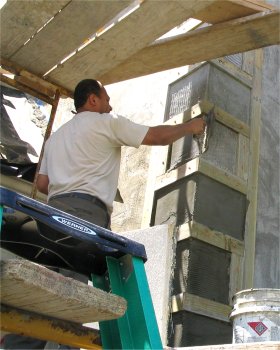
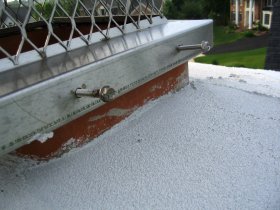
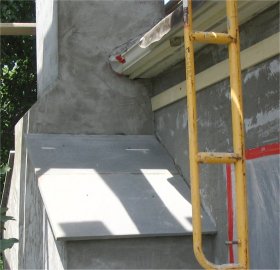
The leak was due to the cap (top) of chimney
was flat instead of pitched away from the center. Also, the old mortar didn't bond to the smooth terracotta flue, leaving a big crack.
Here, top is coated on an angle, allowing water run off, and an acrylic additive assures a good bond the the flue.
This is really fake slate, made from portland cement and sand.
The old houses in Chevy Chase, MD were done this way, which is where we got the idea.
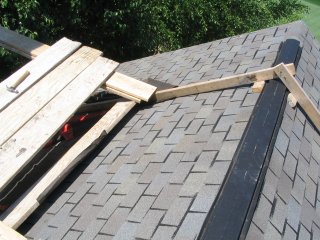
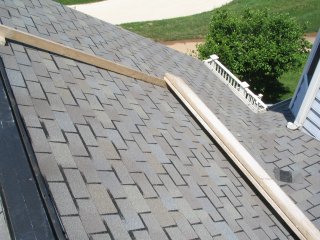
these 2 by 4 hooks. Note how 2 by 4 blocks
keep the ridge vent from getting smashed.
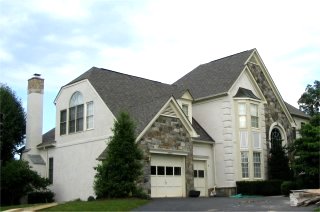
info about this project, but it'll have to wait until
the next update. Some people still have dial up modems.